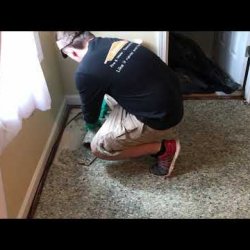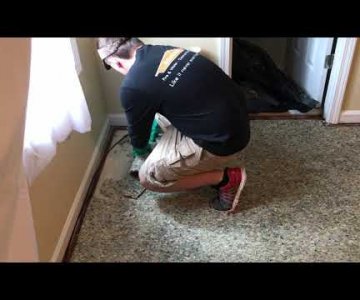protecting-your-home-against-future-water-damage-with-appropriate-maintenance

Introduction
Water damage can be a house owner’s worst headache. It not only causes comprehensive damage to the structure of your home but likewise results in mold development, which can be harmful to your health. Protecting your home versus future water damage is essential to protect your investment and guarantee the safety of your family. With appropriate maintenance and preventive measures, you can decrease the danger of water damage and save yourself from costly repairs.
Safeguarding your Home versus Future Water Damage with Correct Maintenance
Water damage repair work and mitigation service providers use important know-how in safeguarding homes versus future water damage. By following their recommendations and implementing proper upkeep practices, you can effectively protect your home from possible catastrophes. Here are some key steps you can take:
1. Frequently Inspect Your Roofing System for Leaks
One of the most typical sources of water damage is a leaking roofing system. Frequently inspecting your roofing system for any signs of leaks is important in avoiding water damage. Watch out for missing out on or damaged shingles, broken flashing, Deakins Restoration or any other signs of wear and tear. Dealing with these problems without delay will avoid further damage to your roofing system and the interior of your home.
2. Clean Seamless Gutters and Downspouts Regularly
Clogged seamless gutters and downspouts can cause water to overflow, leading to water damage around the foundation of your home. Make it a routine to clear out your rain gutters a minimum of two times a year, particularly during the spring and fall seasons when leaves and particles are more likely to accumulate. This easy maintenance job will guarantee that rainwater flows away from your home instead of leaking into it.
3. Set Up a Sump Pump
If you live in a location vulnerable to flooding or have a basement, setting up a sump pump is highly recommended. A sump pump assists remove excess water from basements and crawl spaces, avoiding water damage and mold development. Frequently inspect your sump pump to ensure it is in proper working condition and think about installing a battery backup system in case of power outages.
4. Keep Proper Grading around Your Home
The grading around your home plays an essential function in diverting water away from the structure. Guarantee that the ground slopes far from your home, permitting rainwater to stream away naturally. If you see any areas where water tends to pool near your structure, consider regrading or setting up French drains to reroute the water.
5. Check for Pipes Leaks
Plumbing leaks can go undetected for a long time, causing considerable water damage. Regularly check your pipes system for any indications of leaks, such as damp areas on walls or ceilings, moldy smells, or abnormally high water costs. Resolving pipes problems quickly will not just prevent water damage but also conserve you money on utility bills.
6. Install Water Leakage Detection Devices
Water leakage detection gadgets are an exceptional investment in protecting your home versus future water damage. These gadgets monitor your pipes system for any leakages and send signals to your smartphone or email if a leakage is spotted. By spotting leaks early on, you can take immediate action and avoid substantial damage.
FAQs about Protecting your Home versus Future Water Damage with Proper Maintenance
Q: How often should I inspect my roofing system for leakages? A: It is advised to inspect your roofing system at least two times a year, ideally during the spring and fall seasons.
Q: Can clogged gutters really trigger water damage? A: Yes, stopped up gutters can cause water to overflow and result in water damage around the foundation of your home.
Q: What is a sump pump, and why do I require one? A: A sump pump is a gadget that helps eliminate excess water from basements and crawl spaces. It is essential in avoiding water damage and mold growth.
Q: How can I preserve proper grading around my home? A: Make sure that the ground slopes far from your home, permitting rainwater to stream away naturally. Think about regrading or setting up French drains pipes if needed.
Q: What are the indications of plumbing leakages? A: Signs of pipes leaks consist of wet spots on walls or ceilings, musty odors, unusually high water expenses, and the noise of running water when no fixtures are in use.
Q: Are water leak detection devices worth purchasing? A: Yes, water leakage detection devices can detect leakages early on and send notifies, permitting you to take instant action and avoid extensive damage.
Conclusion
Safeguarding your home versus future water damage requires proactive maintenance and preventive steps. Regularly inspecting your roofing, cleaning gutters, installing a sump pump, maintaining appropriate grading, checking for plumbing leakages, and buying water leakage detection devices are all vital actions in securing your home. By carrying out these procedures and taking timely action when needed, you can reduce the danger of water damage and make sure the long-term safety of your home. Keep in mind, prevention is constantly much better than remedy when it comes to securing your home versus future water damage with correct maintenance.


Ingen kommentarer endnu